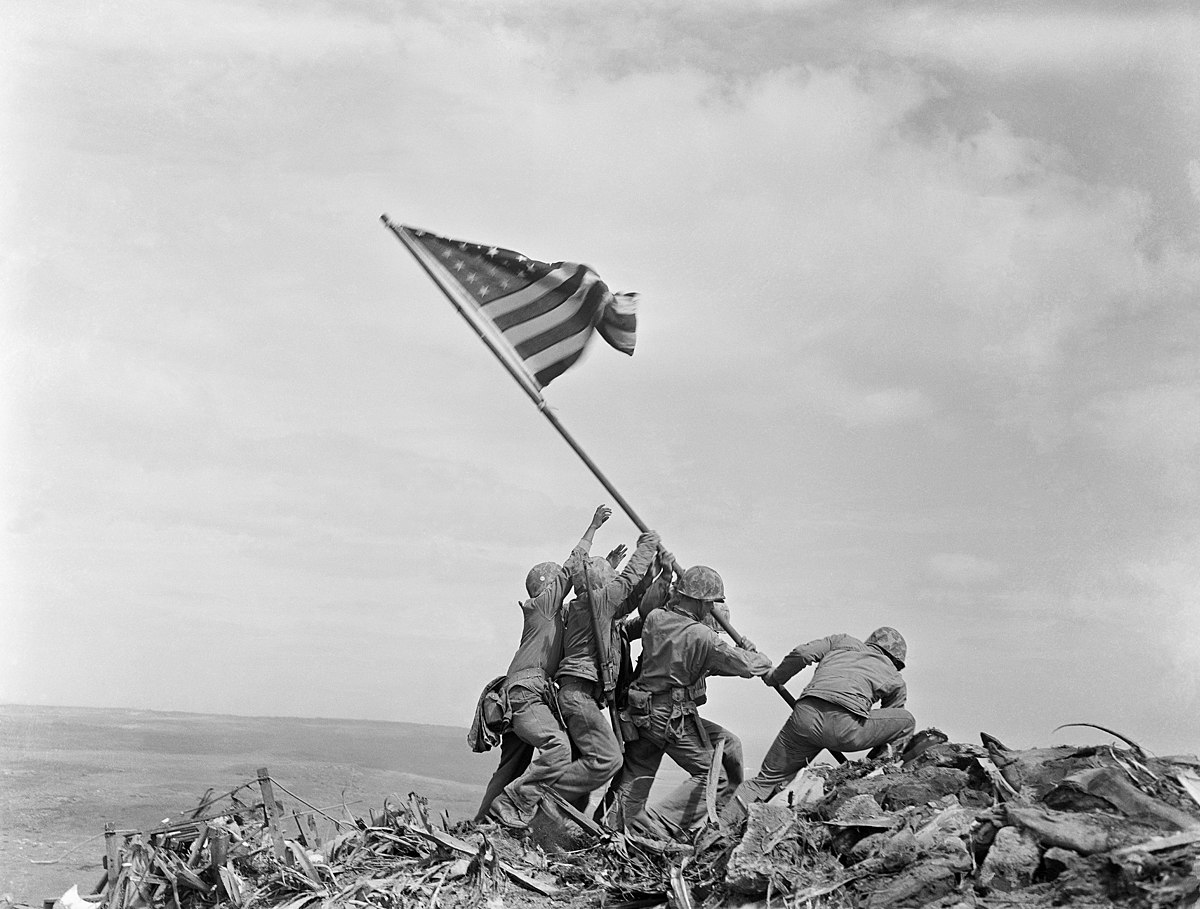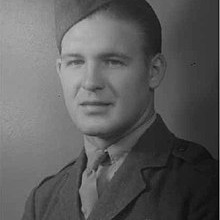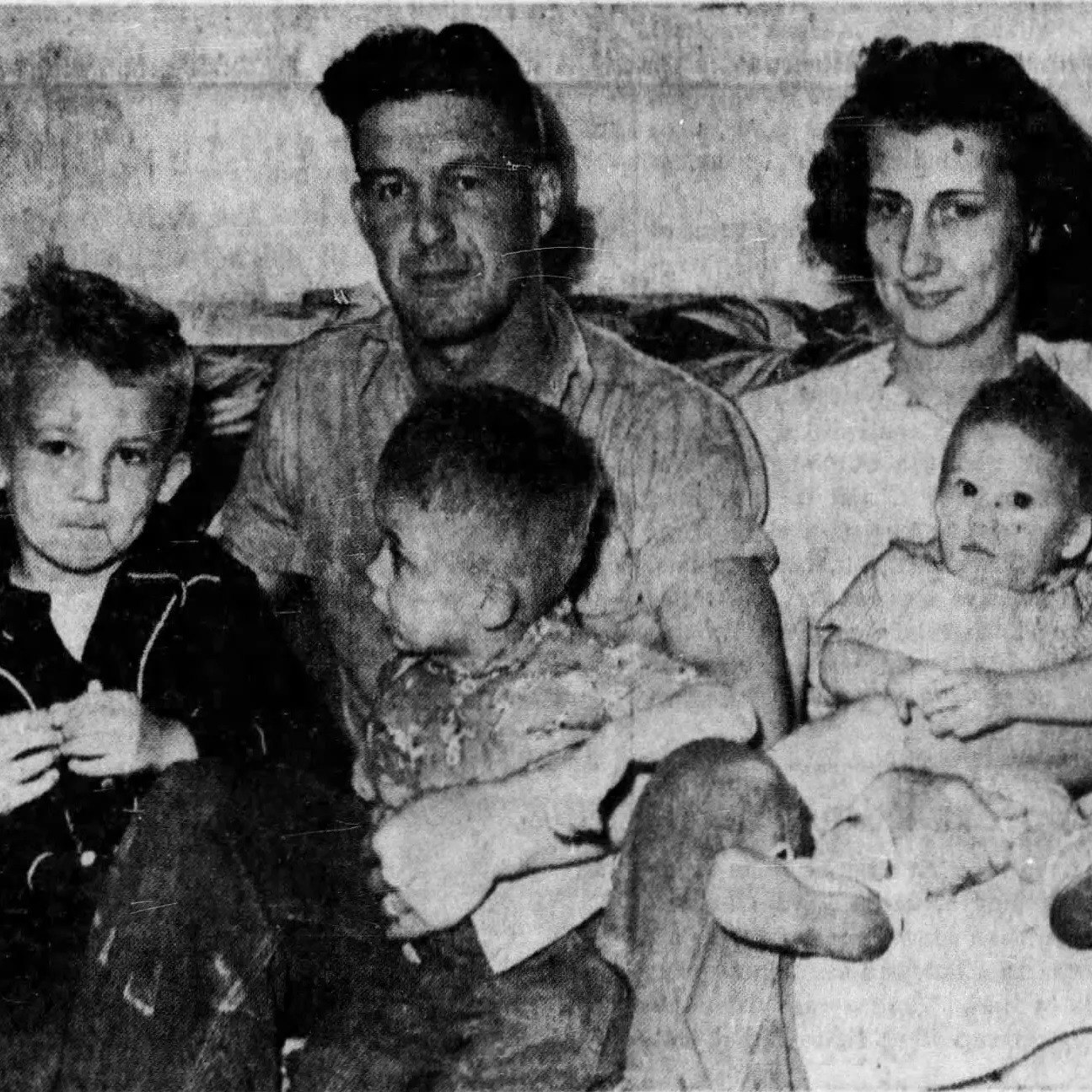
On Feb. 23, 1945, four days after U.S. troops landed on Iwo Jima, Associated Press photographer Joe Rosenthal captured this iconic image of U.S. Marines raising the American flag on Mount Suribachi. The photo went on to win the Pulitzer Prize. For decades, an Iowan in the photo was never identified until last fall.
Jan/Feb 2020 (Volume 12, Issue 1)
By Michael Swanger
Should anyone forget that history is fluid and worthy of research, or that it can illuminate the finer traits of humanity, consider that millions of people around the world for nearly 75 years gazed upon the most widely-reproduced photograph of all time without knowing that an Iowan was in it and that he was content with his anonymity.
Last October, the United States Marine Corps. corrected the identity of a World War II Marine included in Associated Press photographer Joe Rosenthal’s iconic, Pulitzer Prize winning photograph of U.S. forces raising an American flag for the second time on Feb. 23, 1945, on Mount Suribachi, Iwo Jima, Japan, during the Battle of Iwo Jima. With the help of private historians and the Federal Bureau of Investigation, who studied dozens of private photos and film of the event, a Marine Corps. board determined that one of the six men who raised the flag was Brooklyn native Cpl. Harold P. Keller, not Pfc. Rene Gagnon, as previously believed, though Gagnon helped obtain the large flag in the photo. Keller is pictured on the far side of the flag pole where his helmet is barely visible.

“Regardless of who was in the photograph, each and every Marine who set foot on Iwo Jima, or supported the effort from the sea and air around the island is, and always will be, a part of our Corps’ cherished history,” the Marines said in a written statement.
No doubt, the 70,000 Marines and other U.S. forces who fought about 18,000 Japanese soldiers at Iwo Jima for 36 days starting on Feb. 9 displayed uncommon valor as the battle was one of the bloodiest in World War II. More than 6,500 U.S. servicemen died and about 20,000 were wounded.
The victory at Iwo Jima, a tiny island located about 660 miles south of Tokyo, was so important to the U.S. war effort that days after Rosenthal’s photo was taken, it landed on the front pages of newspapers nationwide. Years later, it would be memorialized in many ways, including serving as model for the Marine Corps Memorial in Washington, D.C., a massive monument dedicated in 1954.
Recently, controversy swirled about the identity of some of the men in the photo as their backs and faces were turned away from the camera. Rosenthal shot the photo in the midst of combat and did not collect the names of the men he captured raising the flag. In 2016, the identification of one man was corrected and it was revealed that a Navy hospital corpsman — the subject of a popular book and movie about the event — was not in the photo.
The Marines Corps. investigated the photo again in July 2018 when researchers presented photographic evidence that showed patterns of Keller’s fatigues matching those of one of the flag raisers and that he was holding a cigarette, according to news accounts.

Cpl. Harold P. Keller
NBC News interviewed Keller’s daughter, 70-year-old Kay Maurer of Brooklyn, who said her father kept a framed Rosenthal photo of 18 Marines on Mount Suribachi, but he rarely discussed the war.
“We knew he fought in the war,” she said. “We knew he was wounded in the shoulder at one point. … But he didn’t tell us he helped raise the flag on Mount Suribachi.
“He would say something like, ‘That group raised a flag.’”

The Keller family.
Like so many World War II soldiers, one can only speculate that Keller went to his grave in 1979 content with having served his country during the war and living the remainder of his life in anonymity out of respect to his fellow soldiers who did not survive it.
In spite of his inclusion in the iconic photo, he refused to capitalize on it. Perhaps that is the greater lesson learned here. Today’s society could benefit from his example.
TO READ MORE FASCINATING STORIES ABOUT IOWA HISTORY, subscribe to Iowa History Journal. You can also purchase back issues at the store.
